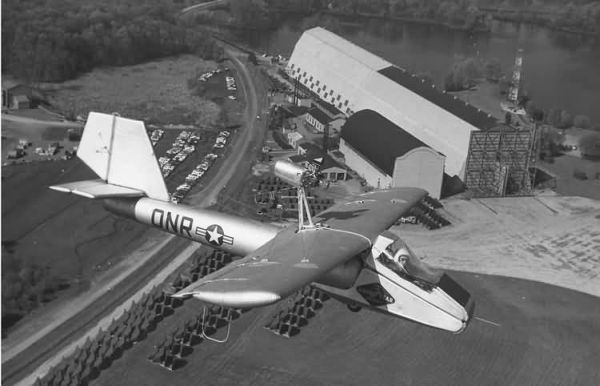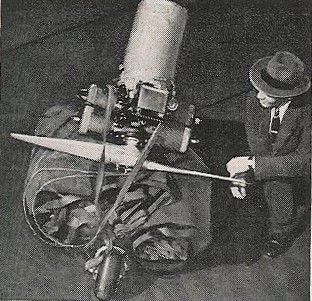Back in 1950’s Army needed some inexpensive new ways to make a rescue aircraft – they decided to give the inflatable aircraft a chance in 1955. The Goodyear GA-466 Inflatoplane was an improbable rubber aircraft designed for the United States Army as a compact rescue aircraft.
The Inflatoplane experimental aircraft was made by the Goodyear Aircraft Company, a part of Goodyear Tire and Rubber Company. The Goodyear Company built their famous blimps as well as military aircraft under licence such as versions of the Vought Corsair. Therefor this was just another step of combining these two experiences.
The Goodyear Inflatoplane was designed and built in only 12 weeks in 1956. The idea was that it could be used by the military as a rescue plane to evacuate agents, downed pilots and military personnel from the hostile territory.
For the easier transport it could be packed into a 44 cubic foot container. That made Inflatoplane suitable for transport by truck, jeep trailer or aircraft.
As it was proposed, main use for this unusual aircraft was rescue. The plan was to drop the container behind enemy lines so downed pilots could rescue themselves.
The wing and tail were constructed of a new rubberized Airmat fabric developed by Goodyear that consisted of joined layers of inflatable rubber-coated nylon fabric shaped by thousands of nylon threads. The fuselage is of simple rubberised airship fabric.
The Inflatoplane had an air-cooled two-stroke 60 hp engine, mounted above the rear of the wing and driving a two-blade wooden propeller. The engine had to be hand started and had 20 gallons of fuel.
When dispatched, aircraft can be inflated in about 5 minutes using a bottle of compressed air or manual pump. Maximum inflation pressure was 7 lb./ sq. in. for the single-seat version, and 8.5 Ib./sq. in. for the two-seat model.
A total of 12 Inflatoplanes were built between 1955 and 1962, but development continued until the project was cancelled in 1973.
Goodyear donated two Inflatoplanes for museum display – one to the Franklin Institute in Philadelphia and one to the Smithsonian Institution in Washington, D.C.
Versions:
- GA-33 Inflatoplane – The initial single-seat version, with open cockpit, based on the Taylor McDaniel inflatable rubber glider experiments from the early 1930s. One built.
- GA-447 Inflatoplane – An enclosed cockpit and new wing, used for undercarriage experiments (tricycle, uniwheel, and hydroskid). One built.
- GA-466 Inflatoplane – Company designation for the AO-2 Inflatoplane
- GA-468 Inflatoplane – Company designation for the AO-3 Inflatoplane
- XAO-2-GI Inflatoplane – Military designation for the GA-466. One built.
- XAO-3-GI Inflatoplane – Military designation for the GA-468. Five built.
Dimensions and performancesof Goodyear GA-466 Inflatoplane
Crew: 1
Capacity: 1 passenger
Length: 19 ft 2 in
Wingspan: 28 ft
Height: 4 ft
Loaded weight: 740 lb
Engine: 1× McCulloch 4318 air-cooled, 60 hp
Performance:
Maximum speed: 70 mph
Range: 275 mi
Service ceiling: 6,500 ft
Rate of climb: 500 ft/min

